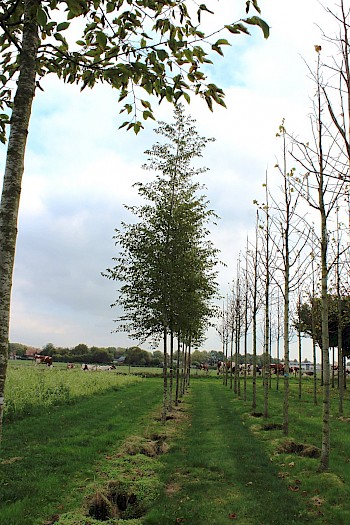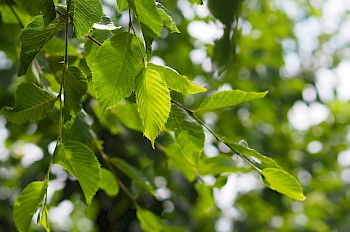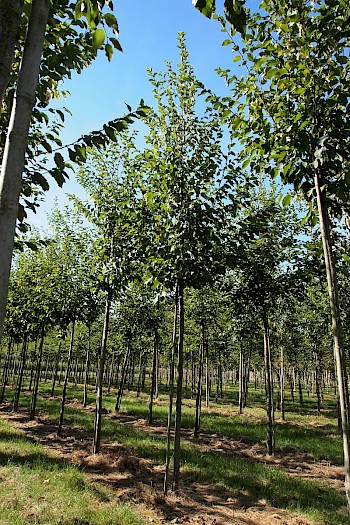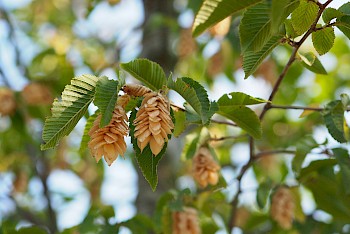12m - 15m
8m - 12m
Half-open
Flower, Fruits
Yellow
Drought, Wind
Fertile
Ostrya carpinifolia ‘F.C. Moree’ is a new avenue tree with very strong characteristics. This Ostrya has a similar appearance to the hornbeam, Carpinus betulus, but is easier to maintain. A tree with many advantages; few soil requirements, year-round decorative value thanks to the female flowers and male catkins, and its leaves fall late.
This Dutch selection was selected from seedlings by Van de Sluis in Randwijk in 2000. He named the tree after a prominent president of the Tree Nursery Association Kring Opheusden, Frans Moree.
The decorative value is determined by the light-green leaves, which turn a nice light yellow in autumn, and by the numerous, hanging, hop-like fruit bunches during summer and autumn. In winter, the male catkins grace the tree. The trunk starts out smooth, greyish-brown with white, oval spots. Later on, the trunk becomes more grooved. The Ostrya carpinifolia ‘F.C. Moree’ has a pyramidal, regularly branching crown. The upward position of 30-45 degrees of the branches is a striking characteristic. The final height is between 12-15 m.
This avenue tree is very healthy, and, to this day, no aphids, lice, or spider mites have been observed. It is resistant to wind. ‘F.C. Moree’ fits any soil type: it grows in any fertile soil and even in dry to very dry soil.
Ostry carpinifolia F.C. Moree’ is very suitable as a street, avenue, and park tree, and is often planted for its durability.



